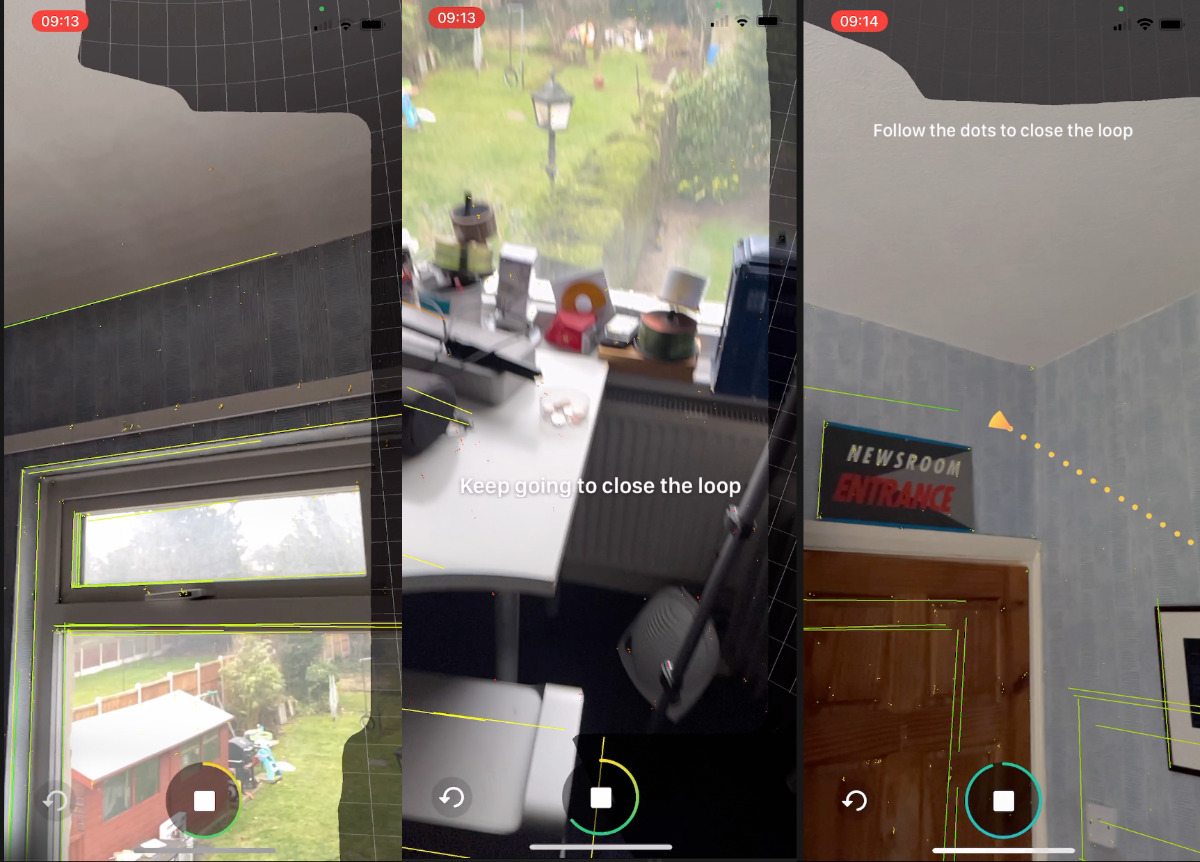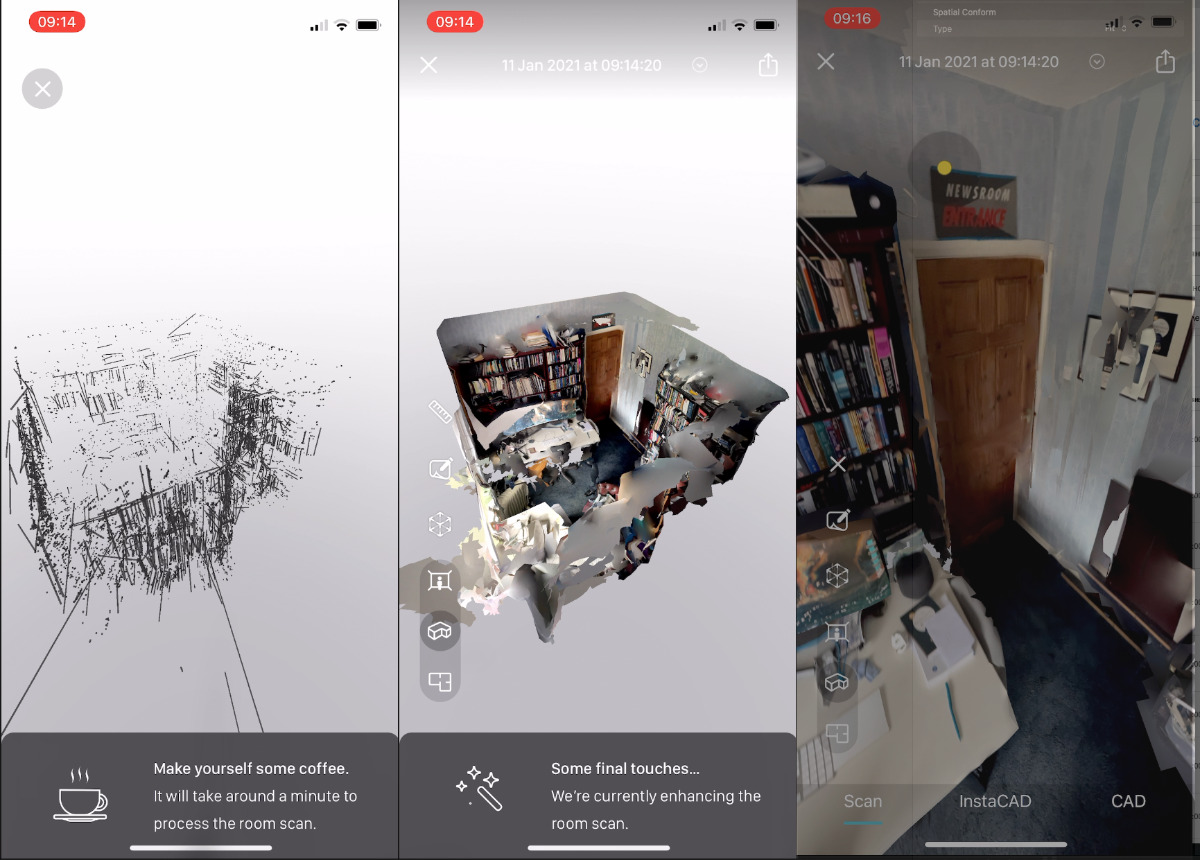How To Use Lidar On Iphone 12 Pro
AppleInsider is supported by its audience and may earn commission as an Amazon Associate and affiliate partner on qualifying purchases. These affiliate partnerships do not influence our editorial content.
You've got a LiDAR scanner if you've got an iPhone 12 Pro, iPhone 12 Pro Max, or an iPad Pro, but Apple doesn't appear to give you any way to use it. Here's how you can, what you need, and why LiDAR is so useful.
LiDAR is part of the iPhone 12 Pro, the iPhone 12 Pro Max, and the iPad Pro, but you could be forgiven for not even noticing. Apple barely mentions it at all, and there is no LiDAR app on the phone for you to try.
Given that one of its key uses is in photography, you'd expect some kind of LiDAR controls in the Camera app, or at least something in Settings. But there's neither.
There's also little incentive to go looking for such controls because until you've seen it in action, it's hard to grasp just what LiDAR can do for you. The technology scans your environment, building up a 3D image of it, and that's going to change how well AR and VR works.
For now, Apple seems happy to let LiDAR subtly help you out by how it supplements existing apps and functions.
How you're already using LiDAR
If you've previously given up on using Apple's Measure app, try it again. The app is now aided by LiDAR and that's improved it noticeably.
Measure is now faster to start using, because it senses its surroundings quicker. And because LiDAR is working to scan your whole environment, measurements you make are more accurate.
That's the theory and in practice, you find that Measure is just more useful than it used to be. Rather than an app you used for rough measurements when you didn't have a tape measure, it's now good enough, and quick enough, to use anywhere.
Next, while it's harder to see, LiDAR has also made your Camera's autofocus work faster. Again, it's because LiDAR maps out the environment around you, so it's begun calculating just how far or near an object is, as you tap the button to take the shot.
If Measure and autofocus are the only two discernible uses of LiDAR from Apple, though, there are already third-party apps that will do much more. There are very many of these, and most feel like experiments in finding out what's possible.
But broadly, they also tend to be good at one of two things. Either they are great at capturing a photograph-like 3D image of your environment, or they're better at capturing an image of an object.

It's a balance between scanning slowly enough to avoid blur, and quickly enough to finish while the app can still store the data
Capturing your whole environment
Use Canvas: LiDAR 3D Measurements for iPhone — free on the iOS App Store — and you can scan your surroundings. Stand in the middle of the room, tap the Measure-like controls, and then slowly turn around.
What you see through the Canvas screen is like standing in a "Star Trek" holodeck. Alongside a camera view of what's immediately in front of you, there's a grid next to it. As you turn, the grid gets filled in which an image of your surroundings.
Move too quickly, and the resulting image is low on detail. Move too slowly, and the app can run out of memory before you complete the scan. So it's a compromise between detail and completeness, but what it gets you is a 360 degree image of your room.
Right there on the iPhone, you can choose to zoom out to see an isomorphic projection of the room, rotate it with a gesture, and zoom in to see it from any angle. Swipe to show the room in closeup full screen, and you can then either swipe to move around — or physically move the phone.
Physically moving the phone shows you what the captured environment looks like as you turn around. But you don't have to be in that same environment that you captured.
You can instead take your phone and examine the scan anywhere else. Stand outside in field, for instance, and see your office on your iPhone screen. Move around the field, and the screen looks as if you're moving around the office.
No question — police officers are going to be taking LiDAR scans of crime scenes in the future. It's only a matter of time before such a scan delivers the deciding clue in an episode of "NCIS."

Even a hurried scan lets you go back in later to measure objects in the environment
Scanning objects with LiDAR
You've already seen this with selected Apple devices. Through AR, and scanned images, your iPhone can show you what, say, a Mac Pro would look like on your desk. LiDAR scanners let you capture an object's image and do exactly that yourself.
Canvas is capable of this, though in our testing it felt optimized for scanning rooms. Equally, the free 3D Scanner App can and does do rooms, but it seems best at capturing objects.
Again, though, there are increasing numbers of LiDAR scanning apps, with many of them free to try.
And again, 3D Scanner App resembles a holodeck in how it presents a grid over your object, which gets filled in and replaced as you scan.
What you can do with LiDAR scans
Next time you move house, take a LiDAR scan of any new property you're considering buying. We're not at the stage yet where apps make it very easy to take a scan of a room, and then drop in separate scans of your furniture, but you can do it.
More usefully, you can get a better feel for the size of apartments when you're comparing them. Being able to effectively walk around each apartment is much more intuitive than relying on floor plans and measurements.
Or if you're slowly clearing out a storage rental, then taking a quick LiDAR scan is visually much more useful than listing how many boxes are left.
These are all uses that benefit you, as the user who took the LiDAR scans, or the measurements and photographs. If someone else has the same app as you, you can typically send them the scan.
And ones, such as Canvas, include an option to send a scan online. It's not the same as being able to turn your phone around as you walk about a virtual room. But you can see a 360 degree scanned image on your Mac.
What's next for LiDAR
Apps will get more sophisticated as developers explore the technology — and as it becomes more worth their while when LiDAR becomes commonplace. That will surely also extend to new ways of sharing or downloading such scans.
And maybe then we'll see more, maybe then we'll also have more Apple AR, too.
How To Use Lidar On Iphone 12 Pro
Source: https://appleinsider.com/articles/21/03/02/how-to-use-the-lidar-scanner-in-iphone-12-pro
Posted by: tulleycoveress.blogspot.com

0 Response to "How To Use Lidar On Iphone 12 Pro"
Post a Comment